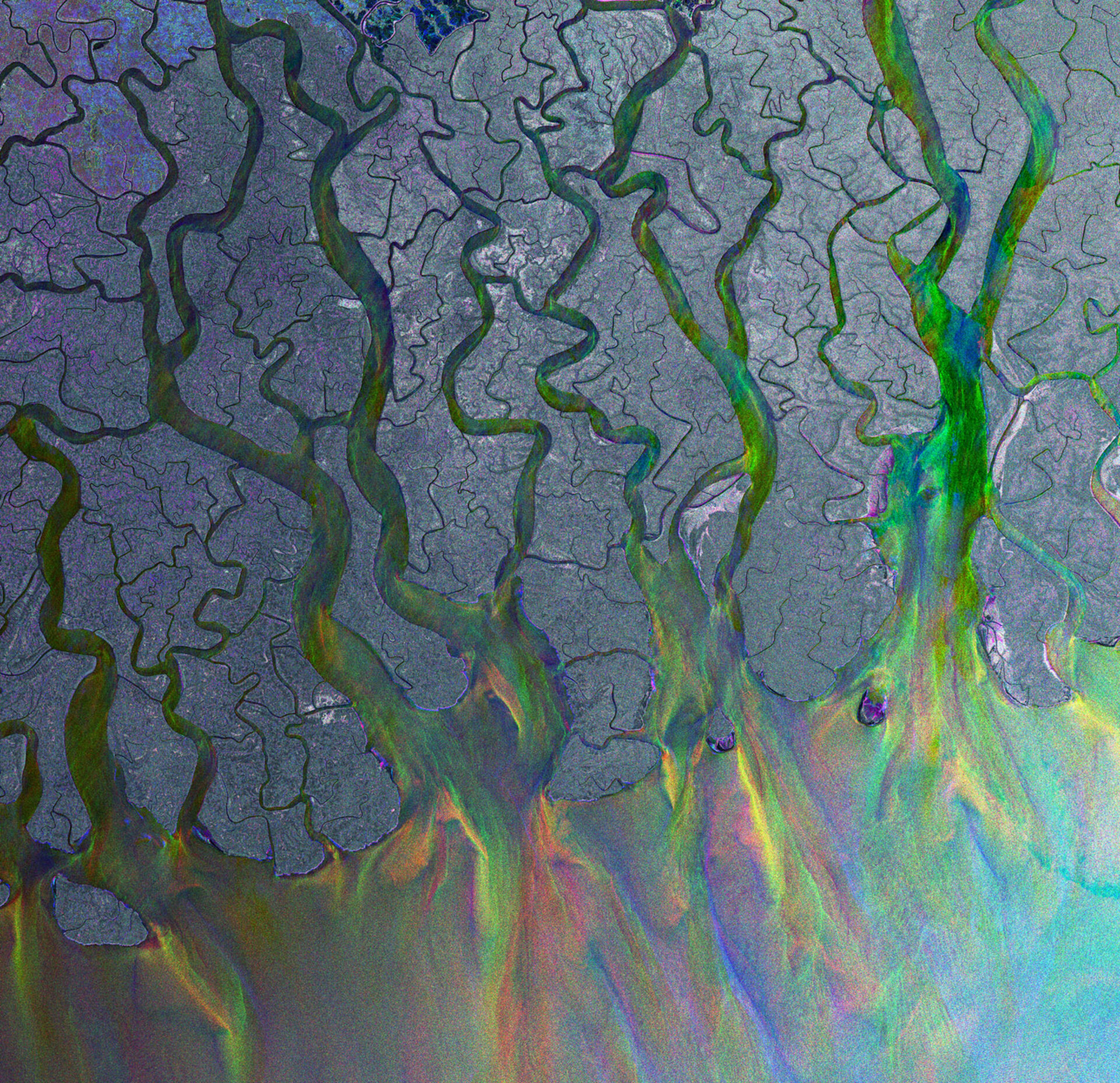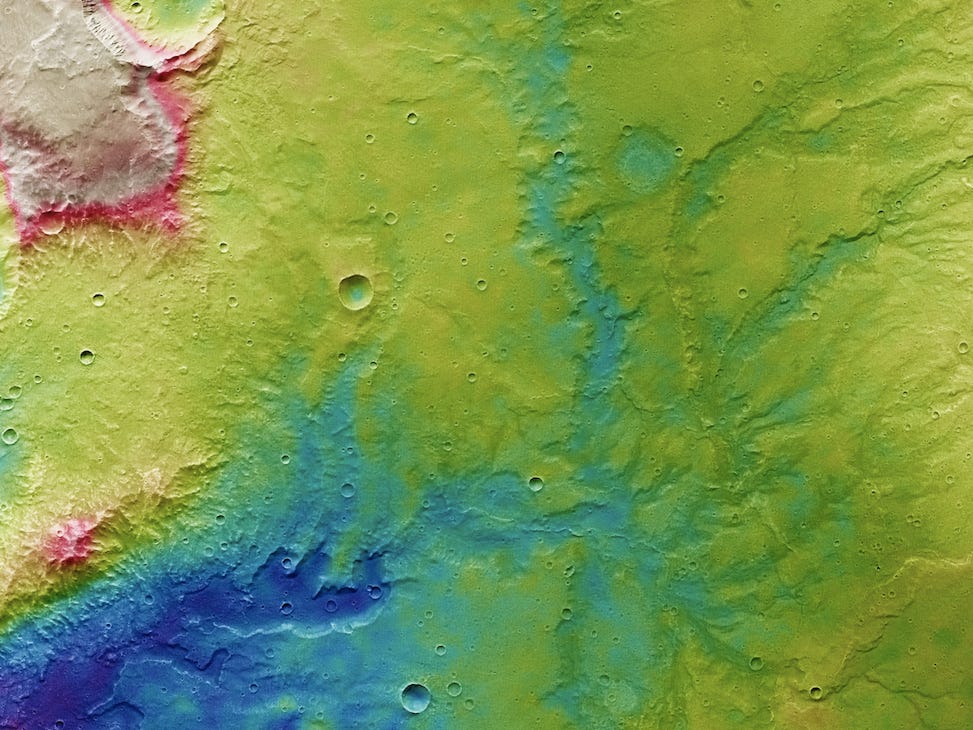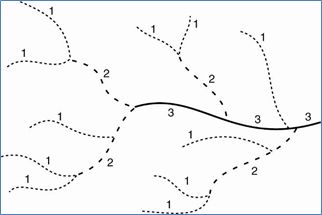63 Streams and Rivers
Streams have a major role in geology.
Streams sculpt and shape the earth’s surface by eroding, transporting, and depositing sediment.
By eroding sediment from uplifted areas and creating landforms made of deposited sediment in lower areas, streams shape the earth’s surface more than glaciers do, more than waves on a beach do, and far more than wind does.
What Are Streams?
A stream is flow of water, driven by gravity, in a natural channel, on land. It completes the hydrologic cycle by returning precipitation that falls on land to the oceans. Flowing water does the work of both erosion and deposition.A small brook in a meadow and the Amazon River are both streams.

Ganges Delta from space: https://images.app.goo.gl/a7F2sozApSCNzG4z9
Streams can be found not only on Earth but also on Mars: https://www.businessinsider.com/stunning-images-show-dried-up-tree-like-river-system-on-mars-2019-3
Most valleys on earth are the product of streams. Streams erode dirt and rocks, transport the sediment, and redeposit it in new locations, shaping the earth’s surface into a system of stream valleys.
Streams flow downhill due to the force of gravity. The higher the hill, the more gravitational energy there is to drive the stream. Where the slopes are steepest and the hills the highest, the streams will be the most energetic and the rate of erosion will be fastest.
Stream Types by flow
Streams can be perennial, intermittent and ephemeral.
Perennial: flows all year round; characterized by well-developed channel, measurable flow, good fish habitat, etc.
Intermittent: seasonal. Can flow during the spring, summer or autumn. Depending on the season or climate change, can dissapear during the drought and re-appear agauin during the wet season.
Ephemeral: appears only during rain or storm events, exist for a short time. In dry climatic zones ephemeral streams can appear suddenly and cause flash floods (very fast and sudden water flows). Ephemeral streams sometimes are called wadi (in arabic speaking countries) or arroyo (in spanish speaking countries).
Flash flood example, Southern Utah
Classifying streams: stream types by order
STRAHLER’S LAW: categorizes streams according to the number of their tributaries (i.e. incoming stream channels, contributing flow).
This classification is useful for comparative studies of drainage basins.
Strahler’s stream order is based on the following rules:
First order stream is the smallest headwater stream tributary; usually in the upper reaches, can be intermittent.
If two streams of the same order merge, the resulting stream is given a number that is one higher.
If two rivers with different stream orders merge, the resulting stream is given the higher of the two numbers.


